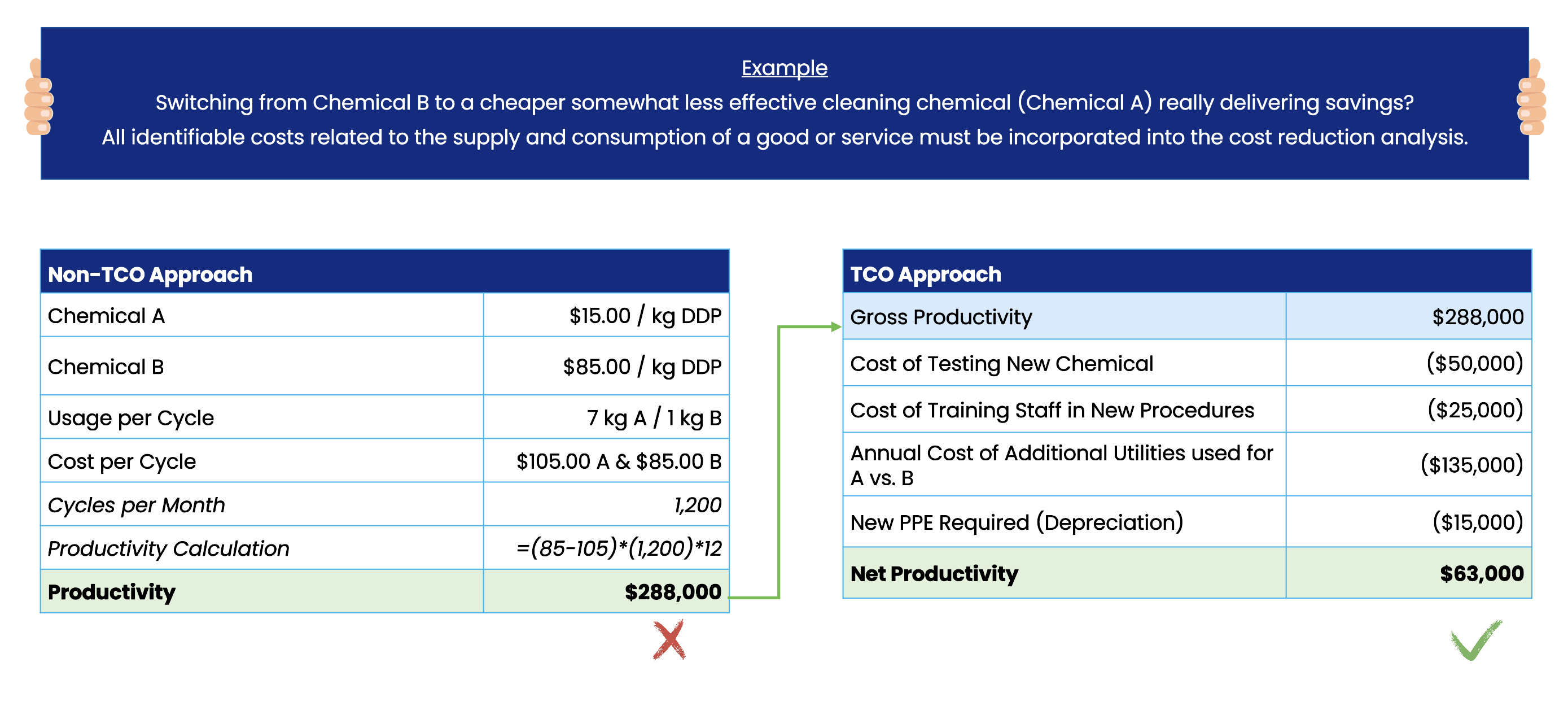
OPEX vs. Indirects Productivity

- Quantity (Q): Measures the volume of goods/services produced or delivered
- Price (P): Focuses on the unit cost or price reductions for services/goods
- Process Efficiency: Improvements in workflows that lead to cost reductions
- Efficiency (D): Comparison of savings from one year to the next related to cost reduction due to specific action taken.
- Value engineering/total project cost/efficiency/optimal use of resources due to intentional change and action taken. This excludes volume reductions from business or finished goods volume.
- Efficiency (D): Comparison of savings from one year to the next related to cost reduction due to specific action taken.
Indirects Productivity Definition

Productivity = (YOY change in cost per unit) X (number of units purchased in the Current Year
Common examples
- Make: Reducing the cost of cleaning & sanitation services in the plant
- Move: Optimizing outbound freight of finished goods to reduce overall cost
- Sell: Sourcing new point-of-sale racks for a cheaper price
- G&A: Negotiating lower rental costs for offices
Key productivity drivers
- Re-negotiating existing contracts using best practices to drive value; YoY productivity based on tangible cost reductions over comparable PY baseline (e.g., rate reductions)
- Managing Categories centrally through COEs
- Consolidating spend across markets & regions centrally to gain leverage & drive savings
Global Indirects Categories
Total Cost of Ownership

Analysing TCO
- TCO is an analysis meant to uncover all the lifetime costs that follow from owning certain kinds of assets
- TCO is sometimes called “life cycle cost analysis”
Asset Ownership
- Asset ownership entails cost of the actual purchase, but it also involves costs due to installing, deploying, using, upgrading, and maintaining the same assets; these post-purchase costs can be substantial
- For many kinds of assets, TCO analysis finds a very large difference between the purchase price and the total life cycle costs
- The difference between purchase price and total life cycle costs can be especially large when ownership covers a long time-period
Total Cost of Ownership
